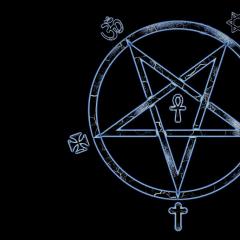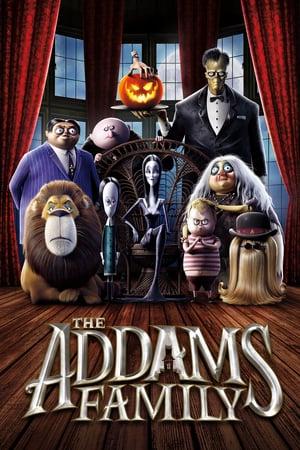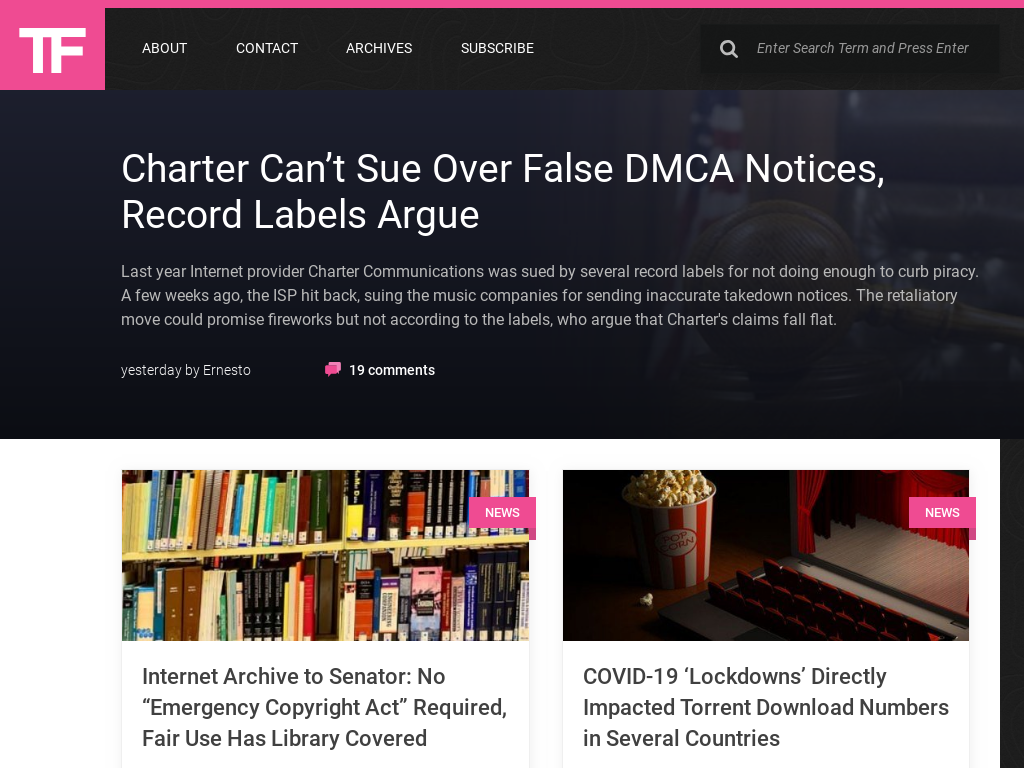-
Recent nieuwsbericht
-
Willekeurig topic
-
Nu op het forum
Eater
Unforgotten S06 Zondag 09-02 ITV (maandag 10-02 afl 2) 6 Afleveringen In Londen duiken rechercheurs in de schimmige wereld van onopgeloste misdaden uit het verleden, waarbij ze geheimen blootleggen die jarenlang verborgen zijn gebleven. Deze detectives, gewapend met scherpe geest en vastberadenheid, ontrafelen complexe verhalen die vaak verweven zijn met de geschiedenis van de stad zelf. Met behulp van moderne technologie en forensisch onderzoek, gaan ze terug in de tijd, waarbij ze oude dossiers en getuigenverklaringen opnieuw onder de loep nemen. Elk mysterie biedt een kans om vergeten waarheden te onthullen en onrecht te herstellen. De spanning van het verleden komt weer tot leven, terwijl de detectives puzzelstukjes samenvoegen die lange tijd verloren leken te zijn. De impact van hun ontdekkingen reikt verder dan alleen individuele zaken; ze werpen ook licht op bredere sociale kwesties en de evolutie van de rechtspraak door de jaren heen. In deze fascinerende zoektocht naar gerechtigheid wordt niet alleen het verleden rechtgezet, maar worden ook de stemmen van de slachtoffers gehoord, en krijgen zij eindelijk de erkenning die ze verdienen. --------------------------------------------------------------------- Big Boys Zondag 09-02 Channel 4 8 Afleveringen Jonge en verlegen Jack heeft het afgelopen jaar doorgebracht in de beslotenheid van zijn huis, samen met zijn moeder, terwijl ze beiden rouwen om het verlies van zijn vader. Deze periode van rouw heeft hem in een cocon van verdriet gehouden, maar nu is het tijd voor Jack om een nieuwe fase van zijn leven te omarmen: zijn studie aan de universiteit. De overgang naar het studentenleven markeert niet alleen een belangrijke stap in zijn academische carrière, maar ook een kans voor persoonlijke groei. Jack staat op het punt een wereld vol nieuwe mogelijkheden en uitdagingen te betreden. Hoewel hij zich nog steeds onzeker voelt, is dit het moment om zijn angsten onder ogen te zien en zijn ware zelf te ontdekken. Universiteit biedt niet alleen onderwijs, maar ook de kans om nieuwe vriendschappen te sluiten en zijn horizon te verbreden. Jack zal moeten leren omgaan met zijn verleden, terwijl hij zich voorbereidt op een toekomst vol avontuur en zelfontdekking. Dit is het begin van een reis die niet alleen zijn intellect, maar ook zijn geest en ziel zal verrijken. ------------------------------------------------------------------------------------ Virdee Maandag 10-02 BBC1 6 Afleveringen Een rechercheur uit Bradford, wiens persoonlijke leven in een puinhoop verkeert, staat voor de zware taak om een moordenaar op te sporen die het gemarginaliseerde Aziatische gemeenschap als doelwit heeft gekozen. Terwijl hij worstelt met zijn eigen demonen, wordt hij geconfronteerd met de dringende noodzaak om gerechtigheid te brengen voor de slachtoffers en hun families. De spanning in de stad neemt toe, en de angst onder de bewoners groeit met elke nieuwe onthulling. Deze rechercheur moet niet alleen zijn professionaliteit op de proef stellen, maar ook zijn vermogen om te navigeren door complexe culturele dynamieken en gemeenschapsrelaties. Zijn zoektocht naar de waarheid dwingt hem om diep in de onderbuik van de stad te duiken, waar vooroordelen en wantrouwen de boventoon voeren. Terwijl hij aanwijzingen verzamelt en de puzzelstukjes in elkaar probeert te passen, wordt duidelijk dat deze zaak niet alleen een uitdaging voor zijn carrière is, maar ook een kans om zijn eigen verloren waarden en identiteit opnieuw te ontdekken. In een wereld waar elk leven telt, is het zijn missie om de stemmen van de overlevenden te laten horen en te strijden tegen de schaduw van geweld. -------------------------------------------------------------------------------------- Waterloo Road S15 Dinsdag 11-02 BBC1 8 Afleveringen "Moderne dramaserie die zich afspeelt in een uitdagende en diverse Britse middelbare school. Deze serie biedt een diepgaand inzicht in het leven van leerlingen en docenten, terwijl ze navigeren door de complexe dynamiek van de hedendaagse samenleving. Met thema's als vriendschap, identiteit en sociale ongelijkheid, brengt de serie de realiteit van het schoolleven in beeld, waarbij zowel de triomfen als de worstelingen van de personages worden belicht. De verhalen zijn doordrenkt met authenticiteit en emotie, waardoor kijkers zich gemakkelijk kunnen identificeren met de verschillende personages. Elk seizoen verkent nieuwe uitdagingen, van academische druk tot persoonlijke crises, en biedt een platform voor relevante maatschappelijke kwesties. De serie staat niet alleen stil bij de problemen waarmee jongeren te maken hebben, maar viert ook de kracht van gemeenschap en solidariteit. Met een diverse cast en een innovatieve vertelstijl, belicht deze dramaserie de rijkdom van de menselijke ervaring in een moderne onderwijsomgeving. Een must-see voor iedereen die geïnteresseerd is in de realiteit van leven en leren in het hedendaagse Groot-Brittannië." ----------------------------------------------------------------------------------------------- Will Trent S03 Woensdag 12-02 Disney+ 18 Afleveringen Special Agent Will Trent werd bij zijn geboorte verlaten en heeft een zware jeugd doorgebracht in het overbelaste pleegzorgsysteem van Atlanta. Deze uitdagende ervaring heeft hem gevormd tot de man die hij nu is. Vastberaden om te voorkomen dat anderen hetzelfde verdriet en de verlatenheid ervaren, heeft hij een indrukwekkende carrière opgebouwd in de misdaadbestrijding. Trent is niet alleen een agent, maar ook een pleitbezorger voor de kwetsbaren in de samenleving. Zijn persoonlijke achtergrond geeft hem een uniek inzicht in de complexiteit van menselijke emoties en de oorzaken van criminaliteit. Met een ongeëvenaarde ophelderingspercentage leidt hij zijn team in het oplossen van zaken die anderen als hopeloos beschouwen. Zijn toewijding om gerechtigheid te brengen voor de slachtoffers en hun families is ongeëvenaard. Will Trent is meer dan een speciale agent; hij is een symbool van hoop voor degenen die het moeilijk hebben gehad. Door zijn werk inspireert hij anderen om door te zetten, ongeacht de omstandigheden. In zijn strijd tegen onrecht is hij vastbesloten om elke dag het verschil te maken. ------------------------------------------------------------------------------- Valeria S04 Vrijdag 14-02 Netflix 6 Afleveringen Valeria is een schrijfster die zich in een creatieve impasse bevindt, zowel met haar pen als in haar huwelijk. Terwijl de woorden stokten en de samenwerking met haar echtgenoot stroef verliep, zocht ze haar toevlucht bij haar drie dierbare vriendinnen: Carmen, Lola en Nerea. Deze vriendinnen vormen een onmisbare steunpilaar in haar leven. Carmen, met haar scherpe geest en ongezouten mening, daagt Valeria uit om buiten haar comfortzone te stappen. Lola, de dromerige idealist, inspireert haar om weer in contact te komen met haar passie voor verhalen. Nerea, de pragmatische denker, biedt praktische oplossingen en zorgt ervoor dat Valeria niet verliest wat ze zo liefheeft. Samen creëren ze een veilige haven waar Valeria haar frustraties kan delen en nieuwe ideeën kan ontwikkelen. Door de band met haar vriendinnen herontdekt ze niet alleen haar liefde voor het schrijven, maar ook haar vermogen om weer plezier te vinden in haar leven. Deze vriendschap helpt haar om de weg terug te vinden naar creativiteit en geluk, zelfs in de meest uitdagende tijden. ------------------------------------------------------------------------------------------------------------- Funboys Vrijdag 14-02 BBC3 4 Afleveringen De drie vrienden, Callum Brown, Jordan McCafferty en Lorcan Boggin, hebben misschien een omweg genomen in hun emotionele ontwikkeling, maar ze zijn vastbesloten om het beste uit het leven te halen in het pittoreske Ballymacnoose. Gelegen in het hart van het platteland, biedt dit charmante dorp een unieke omgeving voor persoonlijke groei en zelfontdekking.Callum, met zijn creatieve geest, zoekt inspiratie in de natuur om hem heen. Zijn schilderijen vertellen verhalen die de schoonheid van hun omgeving vastleggen. Jordan, altijd de avontuurlijke geest, organiseert regelmatig activiteiten die de band tussen de vrienden versterken, van wandelingen in het bos tot gezellige avonden rond het kampvuur. Lorcan, als de denker van de groep, reflecteert op hun ervaringen en moedigt zijn vrienden aan om hun emoties te uiten en te delen.Samen omarmen ze de uitdagingen en vreugde van het leven, waarbij ze leren van elkaar en groeien in het proces. In Ballymacnoose creëren ze niet alleen herinneringen, maar bouwen ze ook een toekomst vol mogelijkheden. Hun reis van emotionele ontwikkeling is een prachtig voorbeeld van vriendschap en de kracht van samen zijn. ----------------------------------------------------------------------------------------------------------------------- Goldie Vrijdag 14-02 Apple TV+ 13 Afleveringen In een levendig, kleurrijk dorp woont een reusachtige meisje dat zich vaak uit de toon lijkt te vallen. Terwijl ze door de smalle straatjes wandelt, voelt ze zich als een vreemde eend in de bijt, alsof haar enorme gestalte niet past in het schattige tafereel om haar heen. De vrolijke huizen en kleine mensen rondom haar creëren een contrast dat haar onzekerheid versterkt. Echter, op een dag, terwijl ze naar de levendige marktplaats kijkt, begint ze te beseffen dat haar aanwezigheid ook iets bijzonders met zich meebrengt. Haar grote schaduw biedt verkoeling aan de spelende kinderen, en haar glimlach maakt zelfs de somberste dagen zonniger. Ze realiseert zich dat ze niet slechts een reusachtig meisje is, maar een integraal onderdeel van haar gemeenschap. Haar formaat is niet langer een bron van ongemak; het is een unieke kracht die kleur en leven toevoegt aan het dorp. In plaats van zich te verstoppen, neemt ze met trots haar plek in, wetende dat ze precies de juiste hoeveelheid ruimte in beslag neemt. Zo leert ze dat iedereen, ongeacht hun grootte, waarde en betekenis heeft in de wereld om hen heen. ---------------------------------------------------------------------------------------------------------- Yellowjackets S03 Vrijdag 14-02 10 Afleveringen Een uitzonderlijk getalenteerd meisjesteam van een middelbare school, dat zich heeft onderscheiden in het voetbal, wordt geconfronteerd met een ondenkbare tragedie: hun vliegtuig stort neer in de ongerepte wildernis van Canada. Terwijl de meisjes, die ooit samen op het veld stonden, nu in een strijd om te overleven zijn beland, worden ze gedwongen om hun vaardigheden en teamwork op een heel andere manier in te zetten. In de wildernis, ver van de beschaving, ontdekken ze niet alleen hun veerkracht, maar ook de kracht van vriendschap en samenwerking. Elke dag brengt nieuwe uitdagingen met zich mee, van het vinden van voedsel en water tot het opbouwen van een schuilplaats. Hun band groeit sterker, terwijl ze elkaar ondersteunen in deze extreme situatie. De ervaring leert hen niet alleen over overleven, maar ook over de waarde van gemeenschap en doorzettingsvermogen. Dit verhaal van moed en vastberadenheid is een eerbetoon aan de kracht van jonge vrouwen, die ondanks de meest onvoorspelbare omstandigheden samen kunnen overwinnen. Een inspirerend voorbeeld van hoe hoop kan bloeien, zelfs in de donkerste momenten. ------------------------------------------------------------------ I Am Married…But! Vrijdag 14-02 Netflix 12 Afleveringen Na een onverwachte ontmoeting die leidt tot een stormachtige romance, moet een stel de uitdagingen van het huwelijk onder ogen zien. De werkelijkheid van het getrouwd zijn blijkt verre van de sprookjesachtige eindes die ze altijd hebben gekend. In plaats van de ideale liefde die in films wordt afgebeeld, worden ze geconfronteerd met dagelijkse beslommeringen, miscommunicatie en de noodzaak om compromissen te sluiten. Het huwelijk vraagt om meer dan alleen passie; het vereist samenwerking, geduld en begrip. Terwijl ze hun weg zoeken door de chaos van samenwonen, leren ze dat het opbouwen van een leven samen hard werk is, maar ook vervullend kan zijn. Ze ontdekken de waarde van openhartige communicatie en leren elkaar beter begrijpen, zelfs in moeilijke tijden. Dit pad is niet altijd eenvoudig, maar het biedt de kans om samen te groeien en een diepere band te creëren. Hoewel het avontuur vol hobbels zit, zijn het deze momenten die hun liefde sterker maken. Het echte leven na de 'ja' is een reis vol lessen en ontdekkingen die hen dichter bij elkaar zal brengen.Eater
Elevation Zaterdag 08-02 Prime Video Een alleenstaande vader en twee dappere vrouwen verlaten de geborgenheid van hun huizen om de strijd aan te gaan met angstaanjagende wezens. Hun missie? Het leven van een jonge jongen redden die in groot gevaar verkeert. Deze moedige expeditie is niet alleen een test van hun fysieke kracht, maar ook van hun vastberadenheid en saamhorigheid. In een wereld waar verschrikkingen op de loer liggen, worden de grenzen van hun moed op de proef gesteld. Terwijl ze zich een weg banen door duistere bossen en verlaten ruïnes, ontdekken ze niet alleen de verschrikkingen van de monsters, maar ook de diepere betekenis van familie, vriendschap en opoffering. De vader, gedreven door zijn liefde voor zijn zoon, en de vrouwen, elk met hun eigen redenen om te vechten, moeten samenwerken om de uitdagingen te overwinnen. Hun avontuur wordt een ontroerende zoektocht naar hoop en redemptie, waarin elke stap hen dichter bij hun doel brengt. Zullen ze erin slagen de jongen te redden en de monsters te overwinnen, of zullen de schaduwen hen verzwelgen? Het lot van de jongen en hun eigen levens hangen aan een zijden draadje. ----------------------------- Turn Me On Zaterdag 08-02 Sky Onder invloed van een pil die menselijke emoties uitbant, leven een jong stel in een wereld zonder echte gevoelens. Wanneer ze besluiten om hun doseringen te skippen, worden ze geconfronteerd met een ongekende golf van emoties die ze nooit eerder hebben ervaren. De ontdekking van liefde, vreugde en zelfs verdriet opent een geheel nieuwe dimensie van hun relatie. Echter, deze nieuwe emotionele ervaringen brengen ook een last met zich mee. Ze moeten leren omgaan met kwetsbaarheid, angst en de complicaties die echte verbinding met zich meebrengt. De onoprechte schijn van geluk die de pil bood, blijkt een illusie te zijn; de realiteit is veel complexer en diepgaander. Deze reis naar het herontdekken van hun emoties dwingt hen om niet alleen zichzelf beter te begrijpen, maar ook elkaar. Ze staan voor de uitdaging om samen deze emotionele bagage te verwerken en hun liefde te versterken in een wereld die hen ooit de kans op ware gevoelens heeft ontnomen. Zo wordt hun zoektocht naar authenticiteit een krachtige ervaring van groei en verbinding. -------------------------------------------------------------------------------- Muslim Matchmaker Dinsdag 11-02 Disney+ Volg de reis van Amerikaanse moslims terwijl zij de rijke culturele tradities van hun gemeenschap verkennen en de enorme diversiteit binnen deze groep belichten. In hun zoektocht naar moderne liefde navigeren zij door een scala aan uitdagingen en verwachtingen die voortkomen uit hun erfgoed. Dit verhaal onthult niet alleen de unieke gebruiken en waarden die hen verenigen, maar ook de uiteenlopende achtergronden en levensstijlen die ze met zich meebrengen. De zoektocht naar liefde in een hedendaagse context leidt tot interessante ontmoetingen en ervaringen. Terwijl ze proberen een balans te vinden tussen traditie en moderniteit, leren ze niet alleen elkaar maar ook zichzelf beter kennen. Elk individu brengt zijn eigen verhaal mee, vol hoop, dromen en soms zelfs twijfels. Deze documentaire biedt een genuanceerd beeld van de hedendaagse moslimervaring in Amerika, waarbij de nadruk ligt op de veerkracht en diversiteit van de gemeenschap. Het is een inspirerende verkenning van liefde, identiteit en de kracht van verbinding in een steeds veranderende wereld. ------------------------------------------------------------ My Fault: London Donderdag 13-02 Prime Video Een 18-jarig meisje verhuist met haar moeder en rijke stiefvader van Amerika naar Londen. In de bruisende hoofdstad ontmoet ze haar stiefbroer, en al snel ontstaat er een onmiskenbare aantrekkingskracht tussen hen, ondanks hun pogingen om deze gevoelens te negeren. Hun relatie wordt steeds complexer, terwijl ze beiden worstelen met hun nieuwe rol binnen het gezin. Ondertussen is haar biologische vader, van wie ze lange tijd niets heeft gehoord, net vrijgelaten uit de gevangenis en begint hij de sporen van zijn dochter te volgen. Zijn terugkeer brengt een schaduw over haar nieuwe leven, terwijl ze moet omgaan met de gevolgen van zijn aanwezigheid en de geheimen die de familie met zich meedraagt. In deze spannende coming-of-age geschiedenis worden thema's als liefde, verraad en de zoektocht naar identiteit verkend. De jonge vrouw staat voor de uitdaging om haar eigen pad te vinden temidden van de verwarrende dynamiek van haar nieuwe leven en de onvoorspelbare impact van haar verleden. ---------------------------------------------------------------------------------------------------------- Broken Rage Donderdag 13-02 Prime Video Een tweedelige film. Het eerste deel is een rauwe actiefilm die zich afspeelt in een duistere criminele onderwereld. Centraal staat een huurmoordenaar die verwikkeld raakt in een dodelijke strijd om te overleven. Wanneer hij tussen de onverbiddelijke politie en de meedogenloze yakuza komt te staan, moet hij al zijn vaardigheden en strategieën inzetten om te ontsnappen aan hun greep. De film biedt een indringende kijk op de morele dilemma's en de psychologische druk waarmee de hoofdpersoon geconfronteerd wordt, terwijl hij door een web van verraad en geweld navigeert. De sfeer is intens en de actiescènes zijn adembenemend, waardoor de kijker op het puntje van zijn stoel blijft zitten. Dit eerste hoofdstuk legt de basis voor een meeslepende saga over loyaliteit, verraad en de onontkoombare gevolgen van een leven in de schaduw. De spannende verhaallijn en de complexe personages zorgen ervoor dat dit deel niet alleen een spektakel is, maar ook een diepgaande verkenning van de menselijke natuur in extreme omstandigheden. ----------------------------------------------------------- La Doice Villa Donderdag 13-02 Netflix Een succesvolle zakenman reist naar Italië met een belangrijke missie: het voorkomen dat zijn dochter al haar geld uitgeeft aan de restauratie van een vervallen villa. Deze villa, doordrenkt met geschiedenis en charme, heeft echter een onweerstaanbare aantrekkingskracht op haar. Terwijl hij zijn plannen smeedt om haar terug te roepen naar huis, begint Italië zijn eigen romantische magie te ontplooien. De pittoreske straatjes, de geur van verse pasta en de warmte van de lokale bevolking brengen een nieuwe blik op het leven. Terwijl de vader zich verdiept in de Italiaanse cultuur, beseft hij dat zijn dochter niet alleen een oude droom wil herstellen, maar ook haar passie en liefde voor het leven wil ontdekken. De villa, die ooit een symbool van verval was, transformeert in een plek van mogelijkheden en dromen. De vader komt tot de conclusie dat het misschien niet alleen om het geld gaat, maar om de ervaringen en herinneringen die deze reis met zich meebrengt. Zo ontstaat er een spannend avontuur dat niet alleen hun relatie, maar ook hun levens voor altijd zal veranderen. ------------------------------------------------------------------------ The Gorge Vrijdag 14-02 Apple Tv+ Twee uiterst getrainde operaties worden naar verschillende zijden van een mysterieuze kloof gestuurd om elkaar te beschermen. Wat begint als een missie vol spanning en isolatie, verandert al snel in een onwaarschijnlijk partnerschap. Terwijl de kloof hen scheidt, groeit er een bijzondere band tussen de twee, gedreven door vertrouwen en onderlinge steun. Echter, de rust is van korte duur. Wanneer een duister kwaad zich manifesteert vanuit de schaduwen van de kloof, worden ze gedwongen om hun krachten te bundelen. De onbekende gevaren die hen omringen, dwingen hen niet alleen om hun vaardigheden tot het uiterste te testen, maar ook om hun vertrouwen in elkaar te versterken. In een race tegen de klok moeten ze de mysteries van de kloof ontrafelen en het kwaad dat hen bedreigt confronteren. Hun samenwerking wordt cruciaal voor hun overleving, en de uitdagingen die ze tegenkomen zullen niet alleen hun leven op het spel zetten, maar ook de sterke band die ze hebben opgebouwd. De vraag blijft: kunnen ze de krachten van het kwaad overwinnen en elkaar beschermen, of zal de kloof hen scheiden op een manier die ze nooit hadden kunnen voorzien? ----------------------------------------------------- Love Forever Vrijdag 14-02 NetFlix Hanna en Samuel, een stel uit Stockholm, droomden van een intieme bruiloft op het schilderachtige eiland Gotland. Hun plannen waren eenvoudig: een romantische ceremonie omringd door de natuurlijke schoonheid van het platteland. Echter, de realiteit bleek anders te zijn toen familie en vrienden hun wensen onder druk zetten. Het paar zag zich geconfronteerd met talloze verzoeken en verwachtingen, waardoor hun oorspronkelijke visie in gevaar kwam. De druk om een grootschalig evenement te organiseren nam toe, waardoor de liefdevolle eenvoud van hun plannen verloren dreigde te gaan. Toch besloten Hanna en Samuel om hun oorspronkelijke droom niet op te geven. Ze begonnen een dialoog met hun dierbaren, waarbij ze de waarde van authentieke ervaringen benadrukten boven de materiële aspecten van een bruiloft. Door openhartig te communiceren, vonden ze een balans tussen hun wensen en de verwachtingen van anderen. Hun verhaal benadrukt het belang van trouw blijven aan jezelf in een wereld vol drukte en verwachtingen. Uiteindelijk leerden ze dat ware liefde en verbinding de essentie van hun huwelijk vormen, ongeacht de omvang van de viering. -
Recente prestatie
-
Recente actieve topics
-
Populaire bijdragers
-
Willekeurige films
-
Willekeurige link















Aanbevolen reactie
Gearchiveerd
Deze discussie is nu gearchiveerd en afgesloten voor verdere reacties.